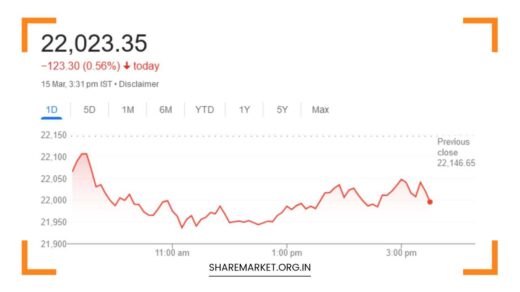Market Fluctuations: Adapting Mutual Fund Strategy to Market Shifts

Mutual Fund Strategy
Navigating Stock Market Volatility: A Comprehensive Guide to Mutual Fund Investment Strategies
In the last two years, the world of investments has witnessed a surge in small-cap and mid-cap mutual fund activities. However, the recent turbulence in the stock market has sent ripples of panic among investors.
The BSE Sensex, after reaching an all-time high just last week, experienced a sharp decline of nearly 3,000 points, accompanied by a 4% drop in the NSE’s Nifty index.
As the market remains in a state of flux, investors find themselves grappling with a crucial question: Is it time to reassess their mutual fund investment strategies?
Understanding the Recent Decline:
The market jitters were notably palpable on January 23, with both Sensex and Nifty50 plummeting by 1.5-1.5%. On this tumultuous day, selling activity was observed across various sectors, barring pharmaceuticals.
Avadhoot Bagkar, a seasoned Technical and Derivatives Analyst at StoxBox, shed light on the situation, stating, “The major indices started with gains, but during the day’s trading, the indices reached their lowest level in a month.
There was a decline in 11 out of 13 sectors, with Nifty Media and Realty sectors experiencing the most significant drops. Mid-cap and small-cap indices saw declines of 3-3%.”
Experts attribute this correction to a consistent sell-off by Foreign Institutional Investors (FIIs), who, over the last five sessions, divested shares worth a staggering Rs 27,830 crore.
Furthermore, apprehensions were fueled by speculations that the Securities and Exchange Board of India (SEBI) might tighten rules concerning Foreign Portfolio Investors (FPIs), leading investors to anticipate more sell-offs by FPIs in the imminent future.
Choosing the Right Path: Large-Cap vs. Small-Cap and Mid-Cap Investments:
As investors mull over the recent market turbulence, a critical question arises: What should be the optimal investment strategy?
Over the past two years, there has been a noticeable surge in investments in small-cap and mid-cap funds through mutual funds, while large-cap funds have seen relatively limited flows. In times of uncertainty, experts propose a cautious approach, emphasizing the stability that large-cap stocks may offer compared to their smaller counterparts.
Kirtan Shah, the founder of Credence Wealth Advisors, provides valuable insights, stating, “Traditionally, January is a challenging time for the Indian stock market. Long-term investors need not worry about short-term fluctuations; instead, view this as a buying opportunity.
On the other hand, short-term investors should exercise caution.” Shah’s advice underlines the importance of aligning one’s investment strategy with their risk tolerance and investment horizon.
Staying the Course with Systematic Investment Plans (SIPs):
Amidst the market tumult, investors engaged in Systematic Investment Plans (SIPs) may find solace in the stability offered by this systematic approach.
Despite the remarkable 4% decline in the stock market within a week, the decision to alter mutual fund investment strategies depends on an array of factors, chief among them being individual financial goals.
SIP investors, in particular, are advised to stay the course, bearing in mind that SIPs do not guarantee assured returns.
However, the consensus among experts is that despite short-term uncertainties, the market is anticipated to exhibit growth in the long term, making SIPs a potentially lucrative choice for investors committed to a steady, disciplined investment approach.
Developing a Robust Investment Strategy:
In the face of market volatility, it is imperative for investors to craft a robust and flexible investment strategy that aligns with their financial objectives. Here are key considerations to guide investors in navigating through uncertain times:
- Assess Risk Tolerance: Before making any decisions, investors should reassess their risk tolerance. Market fluctuations can be unsettling, but understanding one’s risk tolerance helps in determining an appropriate asset allocation that can weather short-term storms.
- Diversification is Key: Diversifying investments across various asset classes can act as a buffer during market downturns. While small-cap and mid-cap funds may offer high returns, a diversified portfolio that includes large-cap stocks can provide stability.
- Evaluate Investment Horizon: The investment horizon plays a pivotal role in decision-making. Long-term investors may view market downturns as buying opportunities, whereas short-term investors may need to exercise caution and potentially reconsider their positions.
- Stay Informed: In a dynamic market, staying informed about economic indicators, global events, and policy changes is crucial. Being well-informed empowers investors to make prudent decisions based on a comprehensive understanding of the market landscape.
- Consult with Financial Advisors: Seeking guidance from financial advisors can provide personalized insights based on individual financial goals and circumstances. Experienced advisors can offer strategic recommendations tailored to weathering market volatility.
- Review and Rebalance Portfolio: Periodically reviewing and rebalancing the investment portfolio is essential. As market conditions change, the initial asset allocation may deviate, necessitating adjustments to realign with the investor’s objectives.
- Stay Disciplined with SIPs: Systematic Investment Plans (SIPs) embody a disciplined approach to investing, helping investors navigate market ups and downs. Staying committed to SIPs allows investors to benefit from rupee-cost averaging, reducing the impact of short-term market fluctuations.
Final Remarks:
In conclusion, the recent fluctuations in the stock market have prompted investors to reevaluate their mutual fund investment strategies.
While uncertainties persist, a thoughtful and strategic approach can help investors navigate through turbulent times.
Assessing risk tolerance, diversifying investments, considering the investment horizon, staying informed, consulting with financial advisors, and staying disciplined with SIPs are crucial elements of crafting a resilient investment strategy.
Ultimately, market volatility is an inherent aspect of investing, and understanding how to navigate it can contribute to long-term financial success.
By aligning investments with individual goals, staying informed, and maintaining a disciplined investment approach, investors can weather market fluctuations and emerge with a well-positioned portfolio.

















